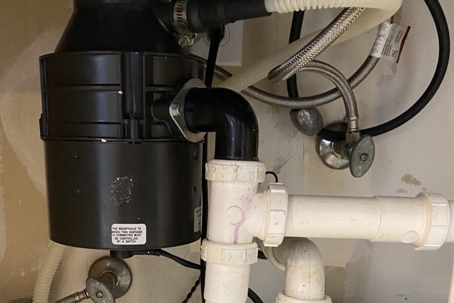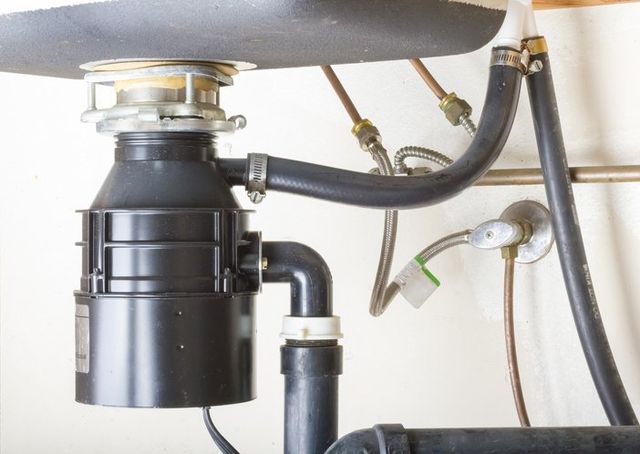The publisher is making several good annotation about Tips on Fixing a Leaking Garbage Disposal as a whole in this article on the next paragraphs.

Waste disposal unit are important kitchen area devices that help in throwing away food waste efficiently. Nonetheless, a dripping garbage disposal can be a frustrating and messy trouble to take care of. Thankfully, lots of leaks can be fixed conveniently with a few basic steps. In this post, we will go over just how to repair a dripping waste disposal unit effectively.
Intro
Garbage disposals are mounted under cooking area sinks and are developed to shred food waste into smaller sized items, enabling it to pass through the pipes system quickly. While these gadgets are generally trusted, leaks can take place gradually because of deterioration, loosened connections, or damages to the unit.
Usual Sources Of Leakages in Garbage Disposals
Worn Seals and Gaskets
Seals and gaskets play a critical role in protecting against water from leaking out of the garbage disposal. Gradually, these components can deteriorate, leading to leakages around the disposal device.
Loose Connections
The links between the waste disposal unit and the plumbing system can end up being loose in time, causing water to leakage out throughout procedure.
Fractures or Holes in the Disposal System
Physical damages to the waste disposal unit, such as splits or openings in the real estate, can additionally cause leaks.
Recognizing the Resource of the Leakage
Before trying to deal with a leaking garbage disposal, it is important to recognize the resource of the leak. This can normally be done via visual assessment or by conducting straightforward examinations.
Visual Examination
Evaluate the waste disposal unit system carefully for any indications of water leak. Pay very close attention to locations around seals, gaskets, and connection factors.
Evaluating for Leaks
One means to test for leakages is by running water through the disposal unit and checking for any type of visible signs of leakage.
Tools and Materials Needed for Dealing With a Dripping Waste Disposal Unit
Prior to starting the repair service procedure, gather the needed tools and products, consisting of a screwdriver, adjustable wrench, plumber's putty, substitute seals or gaskets, and epoxy or patching material for fixing splits or holes.
Step-by-Step Guide to Fixing a Dripping Waste Disposal Unit
Switch off the Power
Before attempting any type of repair work, make sure that the power to the waste disposal unit unit is shut off to stop the threat of electrical shock.
Situate the Leak
Determine the precise area of the leakage and figure out the cause.
Tighten up Connections
Use a wrench to tighten up any type of loose connections between the disposal system and the pipes system.
Replace Seals or Gaskets
If the leak is because of used seals or gaskets, get rid of the old parts and replace them with new ones.
Patching Cracks or Holes
For fractures or openings in the disposal unit, use epoxy or an appropriate patching product to seal the broken location.
Examining the Waste Disposal Unit After Fixing
Once the repair work is total, evaluate the garbage disposal by running water through it to guarantee that the leakage has been fixed.
Preventive Maintenance Tips to Avoid Future Leakages
To avoid future leaks, it is essential to perform regular upkeep on your waste disposal unit. This consists of maintaining it clean, avoiding putting non-food things or hard objects down the disposal, and periodically checking for leakages or other issues.
Final thought
Finally, dealing with a leaking waste disposal unit is a reasonably simple process that can be completed with standard tools and products. By adhering to the steps outlined in this short article and practicing precautionary upkeep, you can keep your garbage disposal in good working condition and avoid expensive repairs in the future.
HERE’S HOW TO FIX YOUR GARBAGE DISPOSAL
WHAT TO DO IF SOMETHING IS STUCK IN YOUR GARBAGE DISPOSAL
If the impeller won’t turn, there’s probably something stuck in the disposal. It could be a steak bone or peach pit, although plumbers report pulling all sorts of inappropriate objects out of disposals, such as bottle caps or aluminum foil. Make sure power to the disposal is off, and look inside to see if you can see the source of the jam.
Never stick your fingers in a disposal. Pull out anything you see with tongs or pliers.
If the disposal still won’t work, it may be time to call a plumber or consider buying a new disposal. GEM Plumbing & Heating is here for all of your garbage disposal needs.
WHAT TO DO IF YOUR GARBAGE DISPOSAL DRAIN IS CLOGGED
- Take everything out from underneath your sink and put a bucket or other container under your disposal to catch any water that drains out.
- Disconnect your disposal from the power supply.
- If it’s plugged into a wall outlet, unplug it.
- If it’s hardwired into an electrical box, go to the electrical panel and turn off the breaker for the disposal.
- Pour ¼ cup of baking soda into the drain, followed by ½ cup of white vinegar. Give the solution a few minutes to fizz and do its work.
- Look into the disposal with a flashlight to see if you can see an object that might be causing the clog. If you see it, remove it using tongs or pliers.
MORE TIPS ON DEALING WITH A CLOGGED GARBAGE DISPOSAL
- Never use drain cleaner in a garbage disposal. It can damage the plastic parts inside the disposal. You can also be splashed with the caustic liquid while working to clear the clog.
- Beware! Never stick your fingers into a garbage disposal. Trust us — not a good idea.
- In many instances, your dishwasher drains through your garbage disposal. This allows the disposal to grind any large food particles that may be drained out of your dishwasher. There are some jurisdictions, however, where the plumbing code prohibits such a connection.
WHAT TO DO WHEN YOUR DISHWASHER DRAINS THROUGH THE DISPOSAL
- Run some water in the sink so your plunger has at least a ½-inch of water to create a seal and plunge vigorously up and down several times. You may need to repeat this several times.
- Run hot water down the drain to clear any residue that remains.

We hope you enjoyed our post on Why Is . Many thanks for spending some time to read through our short article. Please take the opportunity to share this write-up if you liked it. Thank-you for your time invested reading it.
This Post
Comments on “Simple Ways to Repair a Leaky Waste Disposal Unit”